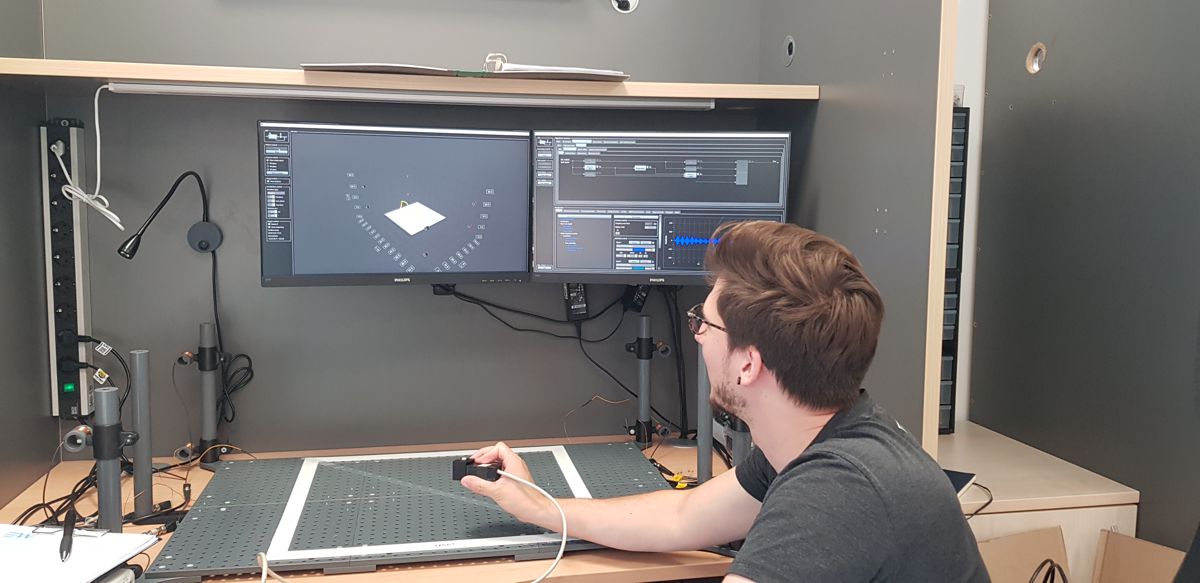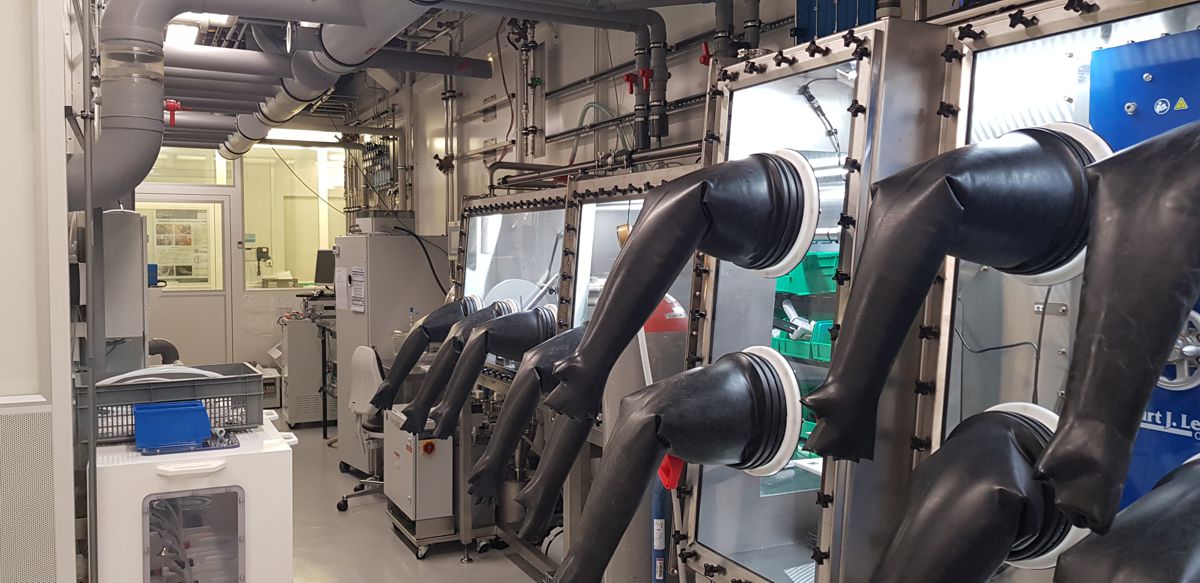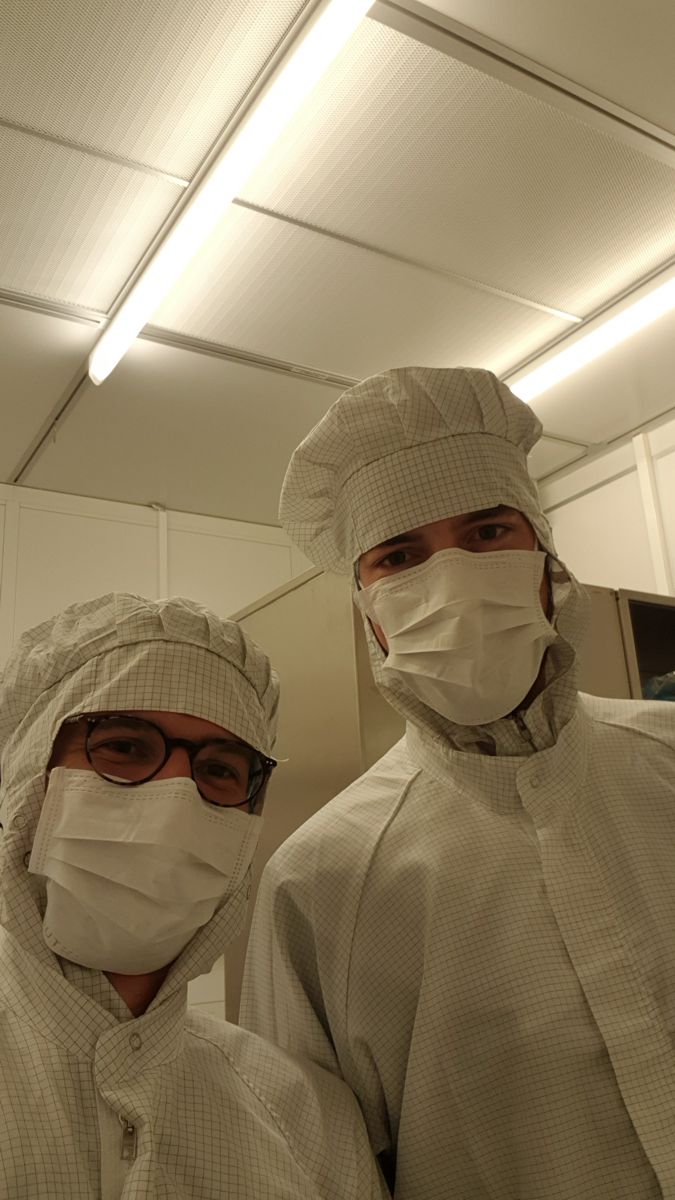Onboarding Day at CRC 1261
As a new PhD student in the Collaborative Research Center (CRC) 1261: Biomagnetic Sensing, my onboarding day provided a comprehensive introduction to both the research environment and my potential role within the Scientific Outreach Project (SOP). This day, full of friendly encounters and valuable insights, set a strong foundation for my upcoming research endeavors and to familiarize myself with the CRC’s members and structure.
Welcome and Introduction
 The day began with an introductory talk by Prof. Gerhard Schmidt, the speaker of the CRC. Prof. Schmidt provided a detailed overview of the CRC's mission, organizational structure, and ongoing research. He also introduced me to key sensor types being developed, including cantilever sensors and surface acoustic wave (SAW) sensors. This provided a fascinating look into the cutting-edge technologies being pursued by the CRC and their medical applications within the fields of cardiology, neurology, motion analysis and gastroenterology.
The day began with an introductory talk by Prof. Gerhard Schmidt, the speaker of the CRC. Prof. Schmidt provided a detailed overview of the CRC's mission, organizational structure, and ongoing research. He also introduced me to key sensor types being developed, including cantilever sensors and surface acoustic wave (SAW) sensors. This provided a fascinating look into the cutting-edge technologies being pursued by the CRC and their medical applications within the fields of cardiology, neurology, motion analysis and gastroenterology.
Meeting with the Scientific Coordination
Following the talk, I had the opportunity to meet Mona, the Scientific Coordinator. Mona was extremely helpful, providing me with an overview of the available programs and courses for PhD students within the CRC. She also highlighted various opportunities for professional development and networking, such as exchange programs, which I look forward to exploring.
Lab Visits and Discussions with PhD Students
A significant portion of the day was spent visiting various PhD students in their labs and offices. This included meetings with:
 Moritz (Project B2), who gave me insights into his work on magnetoelectric sensor applications for localization. This research will help to improve ultrasonographies, but is also very useful for other types of diagnoses that include sensors.
Moritz (Project B2), who gave me insights into his work on magnetoelectric sensor applications for localization. This research will help to improve ultrasonographies, but is also very useful for other types of diagnoses that include sensors.Giuseppe (Projects A8 and B12) and Rahil (Project B12), both of whom are working on magnetic nanoparticles (MIPs) and their use for early detection of inflammation biomarkers in the context of gastric surgeries. This research will help to combat one of the major risk factors of these surgeries.
Lars (Project A1) and Felix (Project A9), who gave me insights into fabrication and analysis of magnetoelectric sensors. Both of these projects are fundamental work and thus important for the CRC as a whole.
Johannes (Project B9), who is involved in developing a motion analysis that will be useful for earlier detection of Parkinson symptoms, especially if it is successfully implemented into wearable technology.
Lunch with Colleagues
Lunch was an enjoyable social experience, shared with a different group of colleagues at a kebab restaurant near the faculty. Among the group were some team members from the Fraunhofer Institute, offering an opportunity to connect with more of the CRC's broader research community.
Visit to the Clean Room
 One of the highlights of the day was visiting the clean room. This impressive facility houses highly specialized equipment used for sensor development. As someone familiar with chemistry labs, I found the clean room to be on an entirely different level in terms of technology and precision. The exposure to this high-tech environment gave me a deeper appreciation for the engineering side of the CRC's work.
One of the highlights of the day was visiting the clean room. This impressive facility houses highly specialized equipment used for sensor development. As someone familiar with chemistry labs, I found the clean room to be on an entirely different level in terms of technology and precision. The exposure to this high-tech environment gave me a deeper appreciation for the engineering side of the CRC's work.
Wrap-Up Discussion
The day concluded with a wrap-up discussion with Prof. Schmidt and my colleague Carolin, who also works in the SOP. We reflected on the day's experiences, discussed upcoming projects, and considered how I could integrate my background in chemistry and educational research into the CRC's outreach initiatives.
Conclusion
 My onboarding day at the CRC 1261 was both insightful and inspiring. It provided an excellent introduction to the CRC's multidisciplinary research efforts, its organization and structure and gave me an idea of how my role in the SOP could contribute to the center's broader goals. I look forward to continuing my journey within this dynamic research community.
My onboarding day at the CRC 1261 was both insightful and inspiring. It provided an excellent introduction to the CRC's multidisciplinary research efforts, its organization and structure and gave me an idea of how my role in the SOP could contribute to the center's broader goals. I look forward to continuing my journey within this dynamic research community.
Paul Benjamin Diemel




